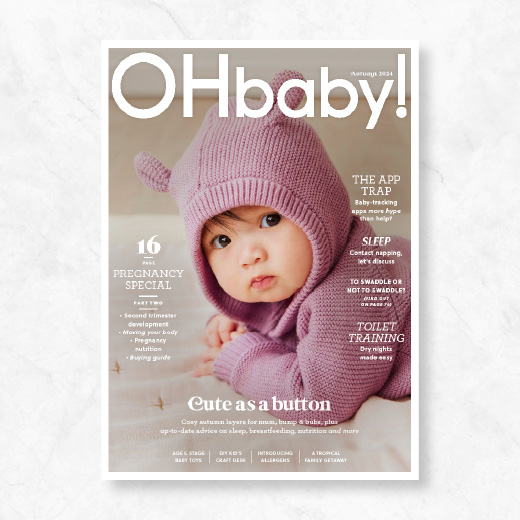Toilet training: top tips for dry nights

Paediatric nurse, Lisa Smith from Children’s Continence Clinic, in collaboration with Continence NZ shares her top tips for dry nights.
So, you’ve got your child toilet trained during the day and the next goal is being dry overnight? This is the last piece of the jigsaw on the toilet training journey with your child. Of all the toilet training steps, staying dry all night can be the most difficult to accomplish and requires maturation of the renal tract and the brain. This involves the brain producing hormones to reduce production of urine overnight, plus the child being able to wake up to the sensation of a full bladder.
Bedwetting is common and considered quite normal for children under the age of five years. By age five, we would expect 70-80% of children to be dry overnight. It does tend to run in families, so if either parents were bedwetters, there is a high chance that your child will take longer to be dry at night. This does not mean that you just have to put up with it – there's a lot that can be done to help your child from around four years old. Before four, they may not be developmentally ready.
WHAT ARE THE SIGNS THAT YOUR CHILD MIGHT BE READY TO DITCH THE NIGHT NAPPY
+ Waking up dry or having just a damp or less full nappy in the morning
+ Waking up dry from the daytime nap
+ Two or three dry nights in a row
+ Your child is saying they don’t want to wear nappies at night anymore
+ Waking up in the night to use the toilet or coming through to you to take them to the toilet

KNOW THEIR BUSINESS
Once our kids are out of nappies, we’re not as vigilant over their daily toileting habits. They go independently and we assume they are doing healthy poos and wees. Alas, this is far from the truth. Many of our kids get ‘FOMO' (fear of missing out) and often perform a poo and wee dance, holding on as long as they can before rushing to the toilet at the last possible second. They rush the whole process and do what I call 'pit stop wees and poos', so they can get back to what they were doing. As a result, they have incomplete emptying of the bowels and bladder and if this goes on long enough, the child will become constipated, along with an irritable bladder that is not likely to be able to hold onto urine all night.
So, what is a healthy bowel pattern in kids? They should pass a soft, light brown, easy to pass poo every day or up to 3-4 times per week (google Bristol Stool Chart to see illustrations – type 4 – 5 is what we’re aiming for).
A healthy bladder pattern is passing a good stream of urine 4-7 times per day, and after their first morning wee, it should be light yellow in colour. Concentrated urine (very yellow or dark yellow) is one of the biggest causes for urinary tract infections and daytime wetting.
POSITIONING
Our bodies are designed to poop and wee in a squat. Our modern day toilets are designed for comfort and do not allow full emptying of the bowels or the bladder especially, or young kids who may be perched on the toilet seat with their feet dangling. All of us should have a footstool so that we are in the correct position and posture on the toilet. Make sure your child is in the correct 'squatty potty' position on the toilet and that they are using a toilet insert too so that their bottom does not go too far down into the toilet. They should not be balancing on the toilet with their feet dangling.
Another tip that I suggest is that it is okay for boys to sit to wee as they are more likely to take their time, relax and have better emptying of their bladder. So don’t teach your boys to stand to wee or have the rule that when at home “you sit to wee”. It does tend to stop them peeing all over the seat and floor too!
KNOW HOW MUCH THEY ARE DRINKING?
Again, due to FOMO, many of our kids are just not drinking enough. They sip little amounts throughout the day and may, if you're lucky, drink a 300 ml bottle.
Some kids have put two and two together and know that if they drink, they must pause play and go to the toilet, so they don’t drink to avoid having to go to the toilet. When I have done a bladder diary in some kids it astounds me that some may only go two or three times per day. I know that many of you will be thinking 'My child is terrible at drinking water. What can I do”? My advice is to incorporate lots of foods that contain high levels of water in them as well. My favourites are cucumber, celery, tomato, watermelon, spinach, strawberries, citrus and rockmelon. Offer water-rich foods with every mealtime and snack.
Drinking fluids as cupfuls rather than sipping on water bottles all day helps to strengthen their bladder; which is just a big muscle that needs to stretch fully for it to empty fully.
A four-year-old should drink around 150 mls per cup and have between 6-8 cups per day. A good rule of thumb for dry nights is for them to have most of their fluid intake by 4 pm so that they only have 2 cups left before bedtime.
THE ONE HOUR RULE
I recommend no water, milk, food, screen time or bright light one hour before bed. This helps to slow the brain, body and bladder down for sleep and subsequently slows down urine production overnight. I know this is easier said than done, so I would suggest doing this bit by bit starting with no screen time or bright light, then work gradually on the rest.

PLAN AND PREPARE
+ Think about accessibility. If in bunk beds, make sure they're in the bottom bunk so they can get up quick and easy to go to the potty or toilet.
+ Take away the sippy cup or bottle overnight. This may not be easy so sometimes a gradual withdrawal is good. Leave them a very small cup of water, which gives the illusion of a full glass even though there is only a little liquid in it.
+ Decide with the child whether they want to use a potty by the bed overnight or the toilet.
+ Protect the bed with a waterproof drawsheet, like a brollysheet. Double make the bed with an extra full set one on top of the other so it’s a quick change if your child wakes up wet during the night.
+ Have spare nighties or pjs by the bed so they can change quickly into dry clothes.
+ Make sure there is a laundry bucket in the bedroom that they can put their wet drawsheet and pjs in for sorting in the morning.
+ Have a night light in the bedroom or in the hall.
+ Keep the toilet door open and light on so they know where to go.
TRIAL WEEK
Some children may never be dry if they have their 'portable toilet' AKA night nappy available. Ditch the nappy once all these things mentioned are in place, but make sure you don’t have them wearing undies or anything snug around their bottom as this may fool them into thinking they still have a nappy on.
Introduce doing a 'double wee' as part of your child’s bedtime routine once you’ve ditched the nappy. I would suggest a wee before or after their bath or before they get changed, clean their teeth and face, and then sit down and try to do another wee right before jumping into bed.
Some families wake their child and take them to the toilet for another wee late at night. In the first few days it may be helpful, but ensure that you put the light on, and they are fully awake, so they do a good wee.
Be wary of rewards – you want to reward your child for the effort they are making to be dry at night not just for the result of having a dry bed (which could cause them stress if they do have an accident). If your child is still wetting every night after a week and you or your child are finding it stressful it’s best to pop them back into nappies again for a few weeks and try again at a later stage. It’s a process, but you’ll get there!
Lisa Smith is an experienced paediatric nurse who runs a private children’s continence clinic in Napier which she started after emigrating from Scotland in 2004. She has a special interest in supporting children with additional needs to become toilet trained due to her lived experience parenting a child with challenging behaviours due to foetal alcohol spectrum disorder. For more information, visit continence.org.nz or childrenscontinence.com.

AS FEATURED IN ISSUE 65 OF OHbaby! MAGAZINE. CHECK OUT OTHER ARTICLES IN THIS ISSUE BELOW

















